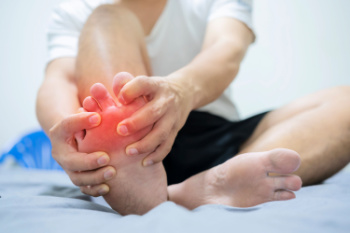
Dancers frequently develop foot blisters due to the intense physical activity and friction involved in their performances and practices. Blisters form when repeated rubbing or pressure causes the skin layers to separate, allowing fluid to collect beneath. The combination of wearing tight-fitting shoes, excessive moisture from sweat, and rigorous foot movements heightens the risk. To prevent blisters, dancers should ensure their footwear fits properly and provides adequate support. Using moisture-wicking socks and applying blister prevention tape or pads can also help reduce friction. Additionally, keeping feet dry and maintaining proper foot hygiene can minimize the risk of blisters. Regularly checking feet for any signs of irritation and addressing it promptly can further prevent the development of blisters and ensure healthier, more comfortable dancing experiences. If you enjoy dancing and have developed foot blisters, it is suggested that you schedule an appointment with a chiropodist who can offer effective treatment techniques, in addition to specific blister prevention methods.
Blisters can usually be treated at home, however, if you have recurring blisters or experience significant discomfort or pain, please consult with one of the specialists from Thornhill Foot Clinic. Our chiropodists will assess your condition and provide you with quality foot and ankle treatment.
What Is a Blister?
A blister is a small pocket of fluid in the upper skin layers and is one of the body’s natural responses to injury or pressure. Blisters can also result from burns, fungal or viral skin infections, and the feet are particularly prone due to ill-fitting footwear and friction. Friction on the skin causes the upper layer of skin to separate from the lower layers. The space that this separation creates then becomes filled with a liquid called serum, which protects the lower layers of skin.
Treatment
If you notice a blister on your foot, you can cover it with a soft bandage or dressing to protect it. Popping the blister is discouraged. Doing so exposes the raw skin underneath it to bacteria and also raises the risk of infection. If a blister pops naturally, let it drain before covering it with a bandage. Blisters usually heal on their own or with home treatment, however, if your blister is recurring, very painful, or appears infected, it is recommended that you see a chiropodist for treatment.
Prevention
You can help to prevent blisters by wearing comfortable, well-fitted shoes. Keep your feet dry by wearing moisture-wicking socks and dust your feet with talcum powder if they tend to get sweaty. If you have areas on your feet that are more susceptible to blisters, you might be able to prevent the blister from forming by covering it with a pad.
If you have any questions, please feel free to contact our office located in . We offer the newest diagnostic and treatment technologies for all your foot care needs.




